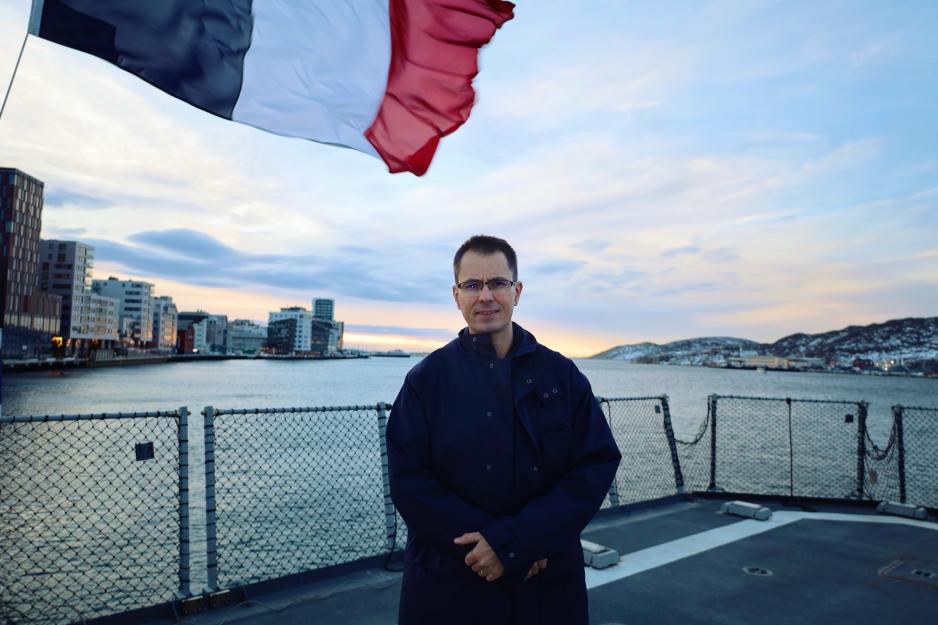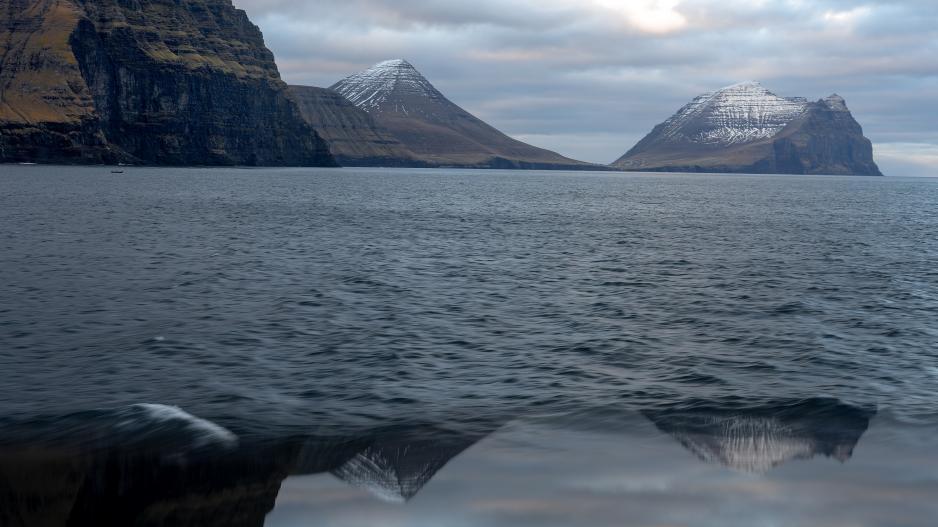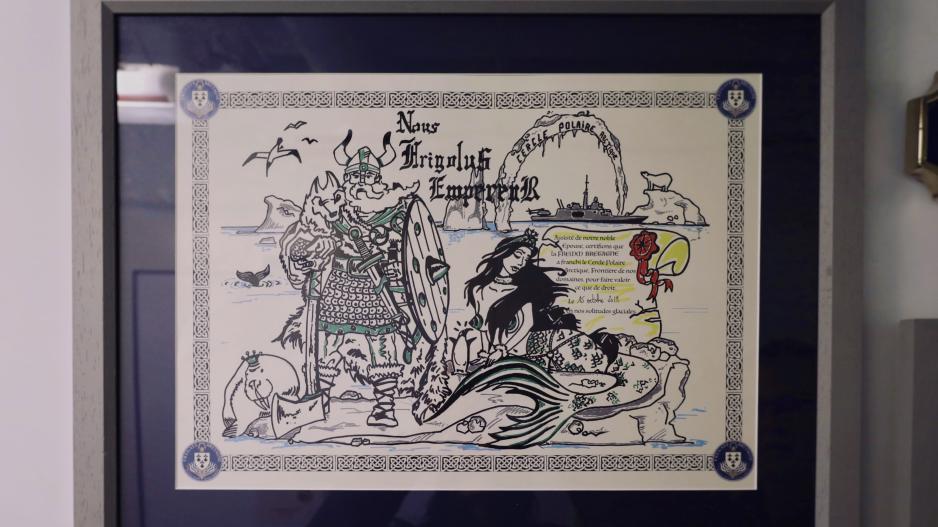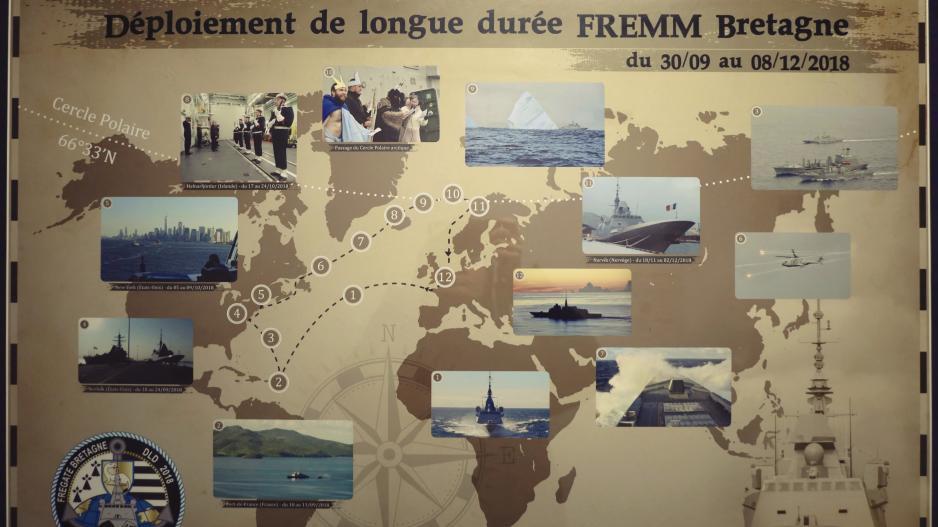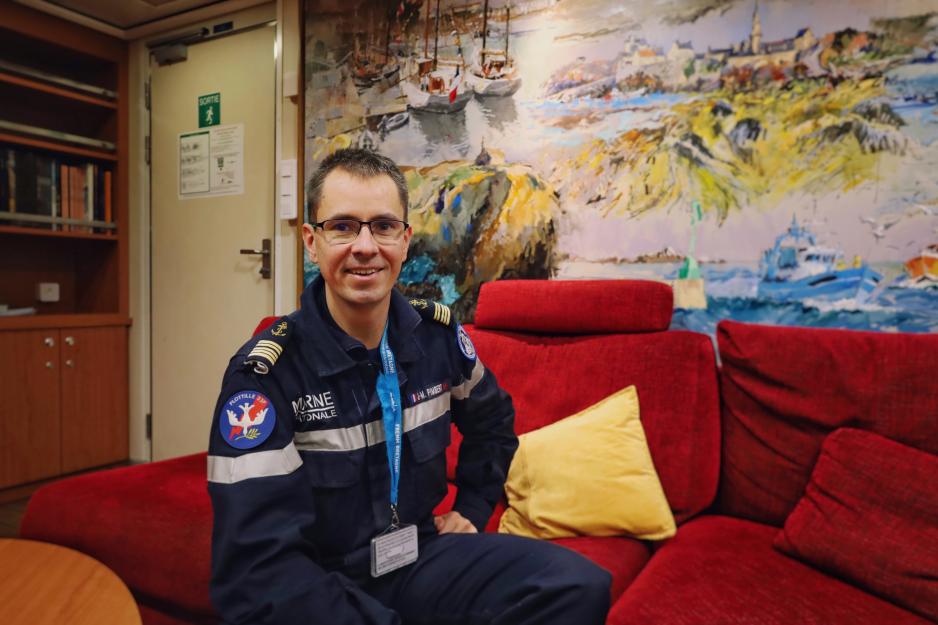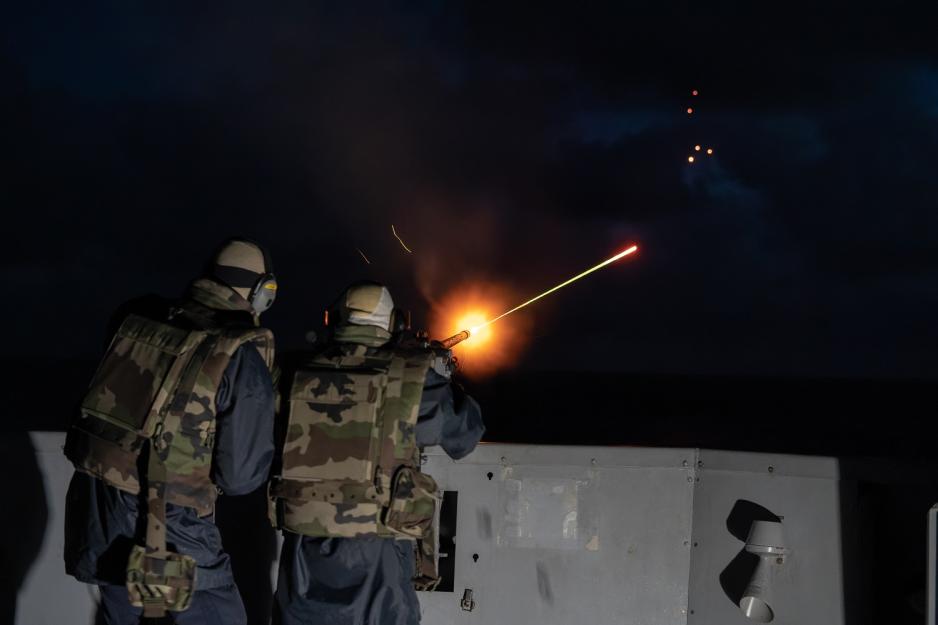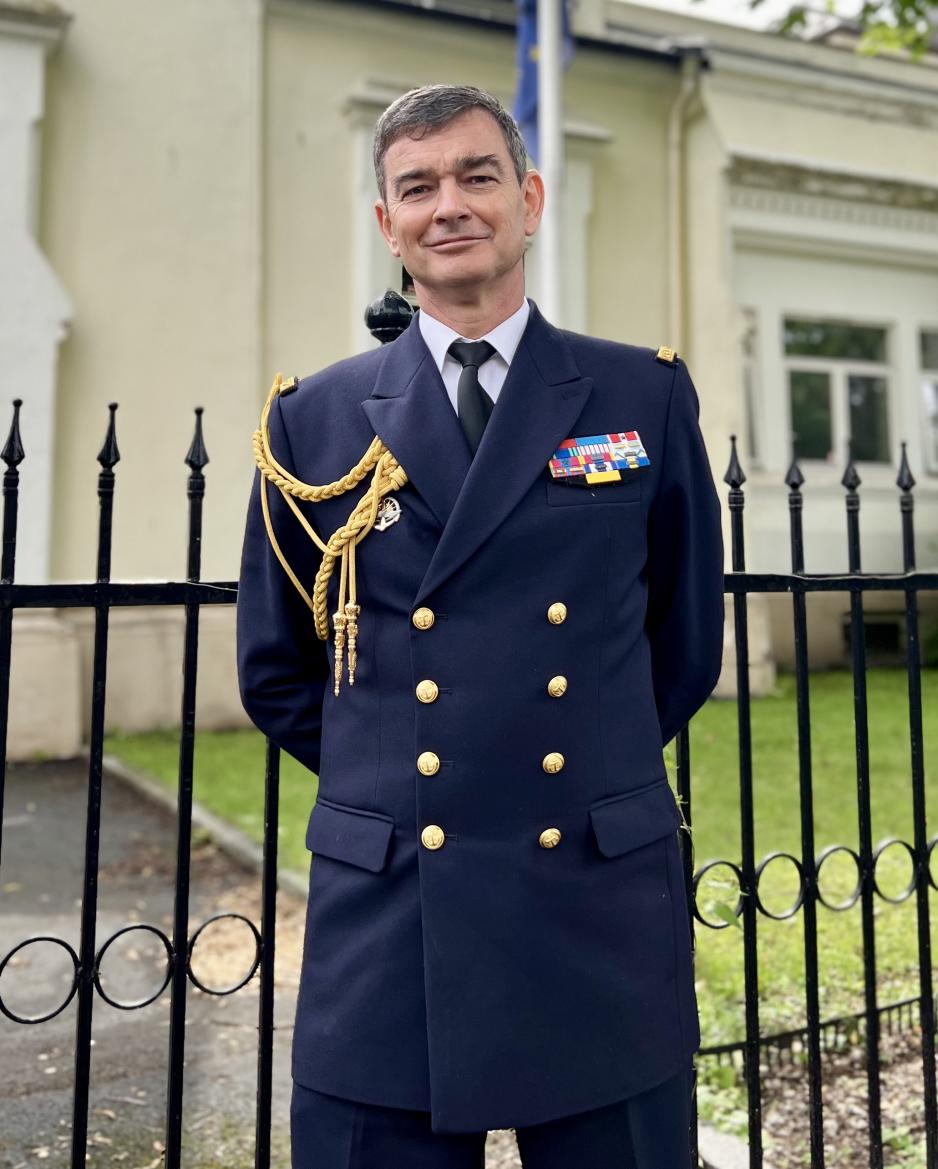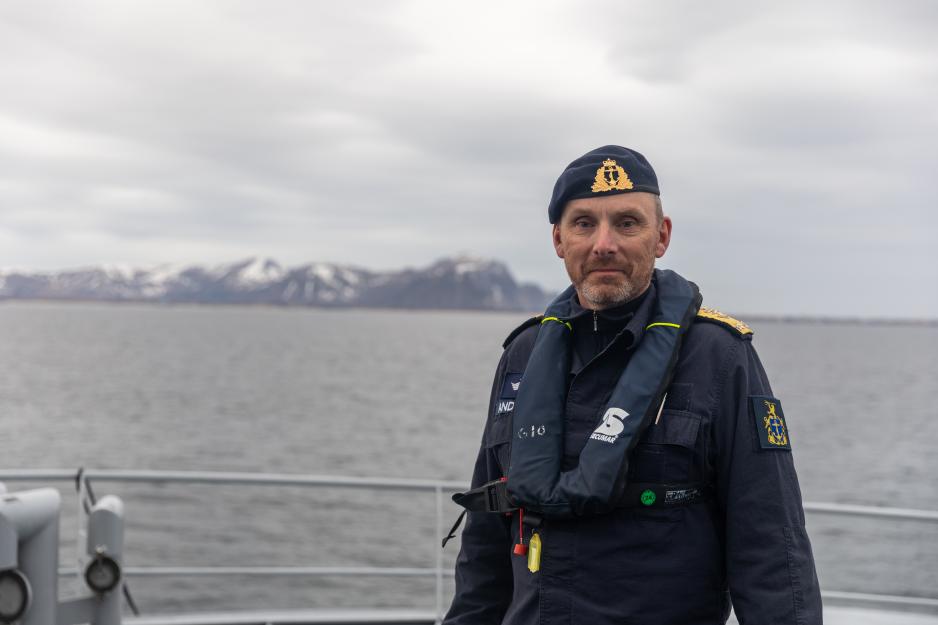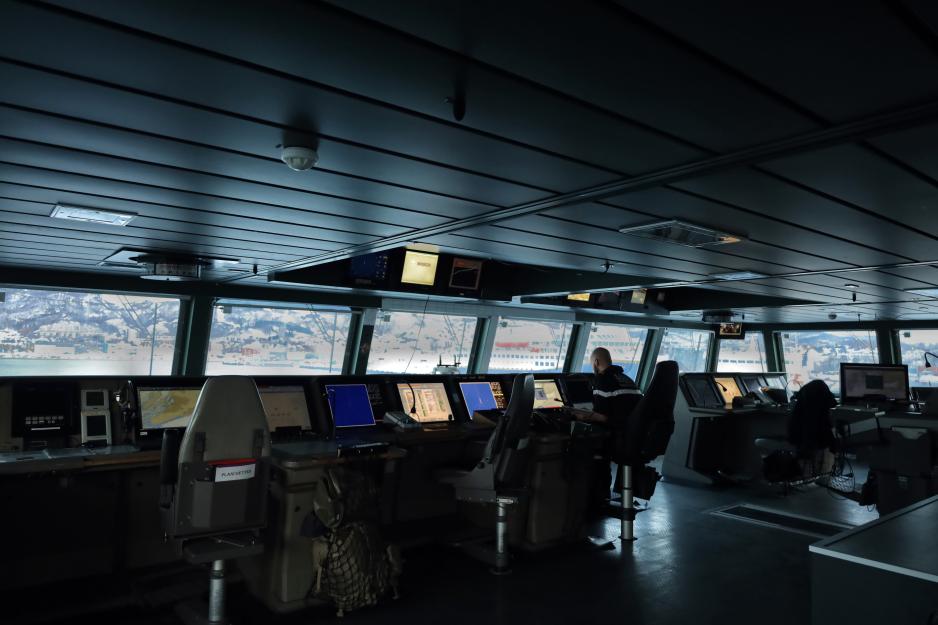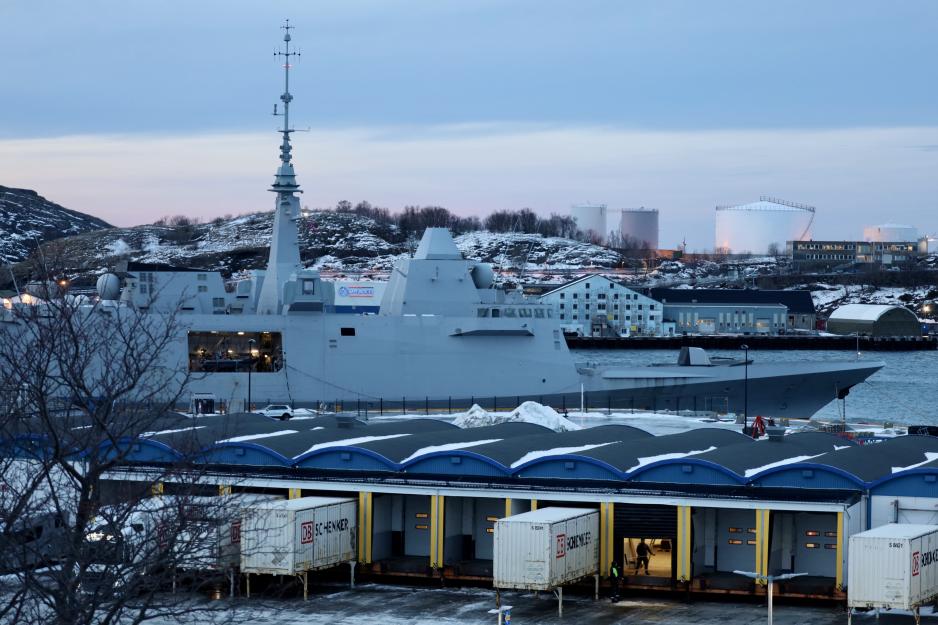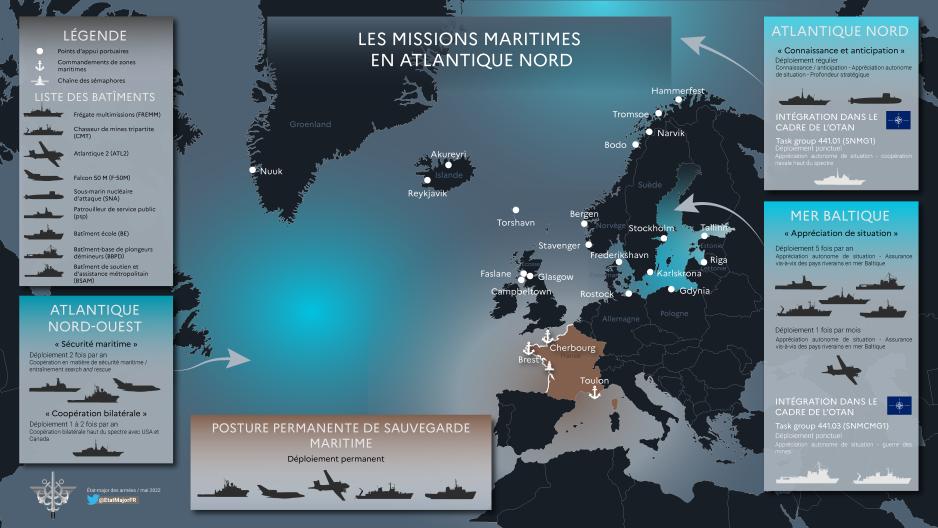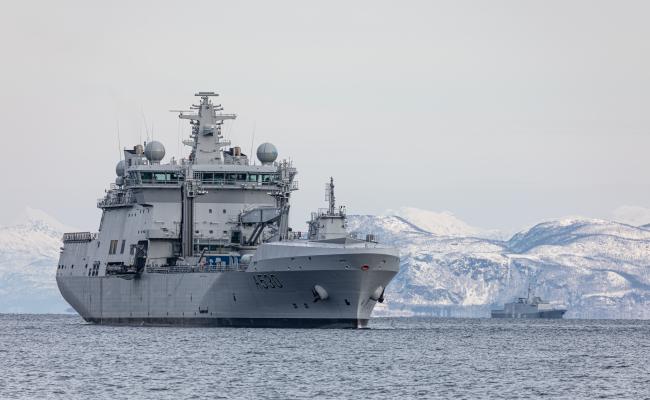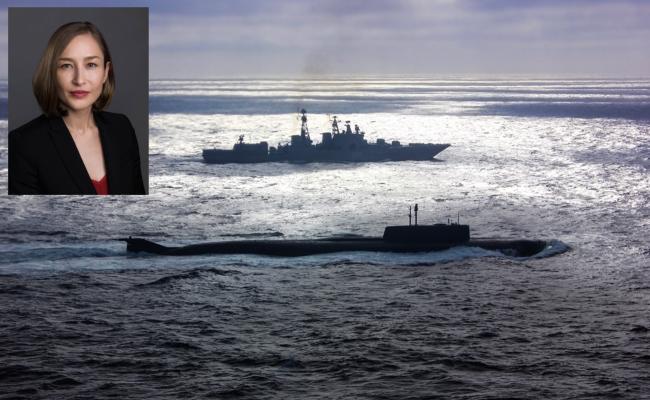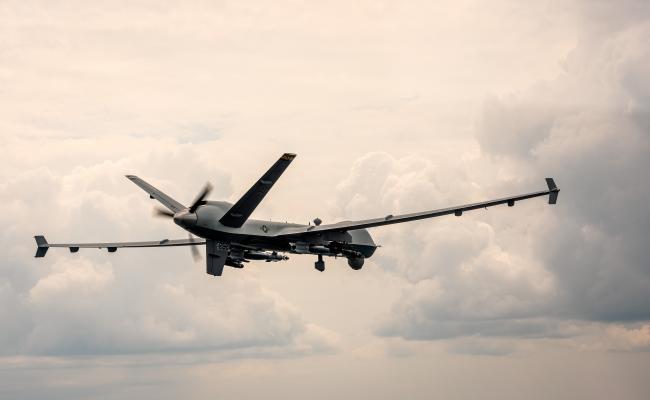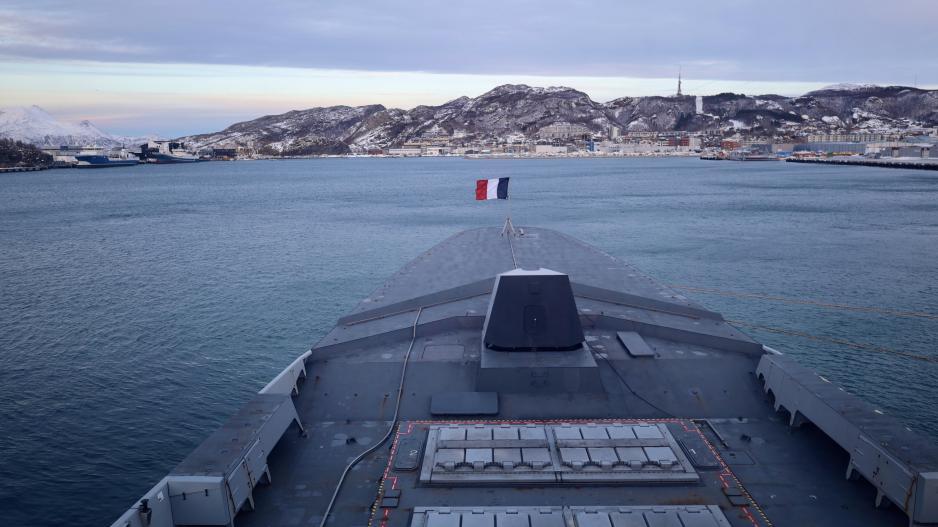
GALLERY: The bow of the FS Bretagne with its main canon and vertical launch system for surface-to-air missiles and cruise missiles. The frigate also has anti-ship missiles, torpedoes, and equipment for electronic warfare. (All photos: Astri Edvardsen) >
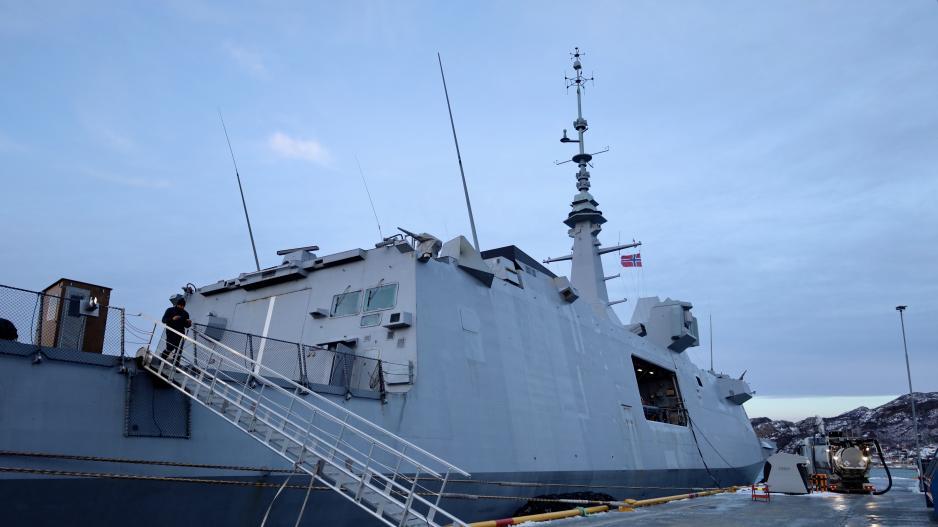
While the French flag is flying in the bow and aft, the Norwegian flag has been raised midship – as a gesture to the host country. The practice has largely been discontinued by other country’s marines, but the French hold on to it, says Pimbert. >
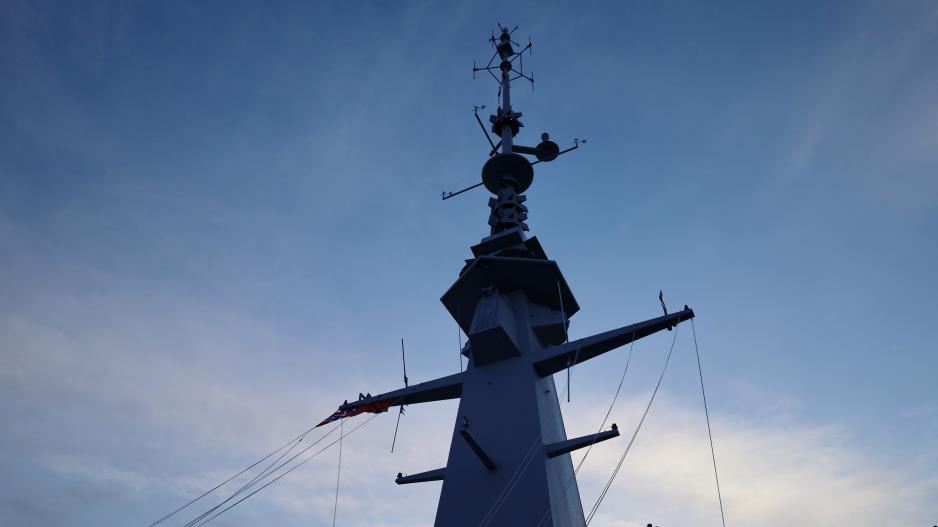
The frigate’s radar has a range of 200 km in the air and about 40 to 80 km at sea, depending on propagation. >
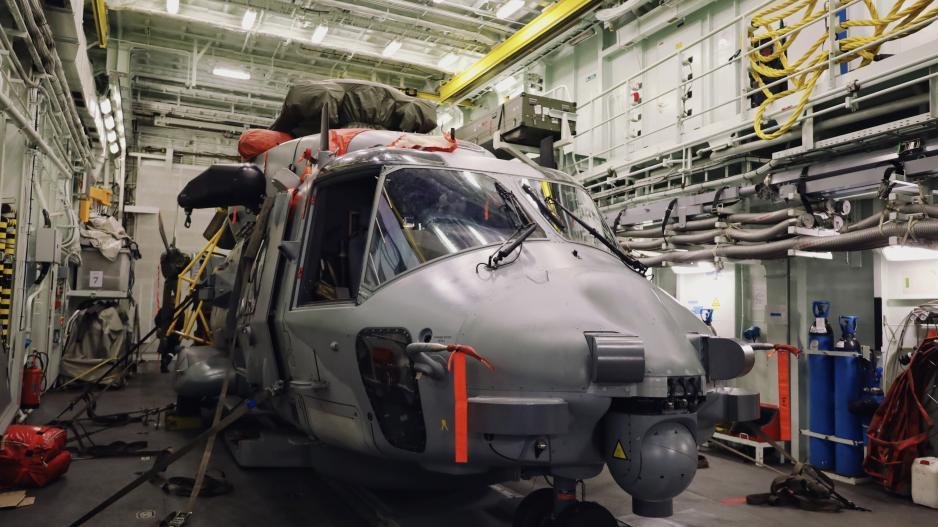
The FS Bretagne carries an NH90 maritime helicopter in its hangar, which is particularly adept at anti-submarine warfare. “In general, aircraft resources can detect targets at a longer range than the ship’s radar due to its speed and ability to operate high in the air,” says the Commander Senior Grade. >
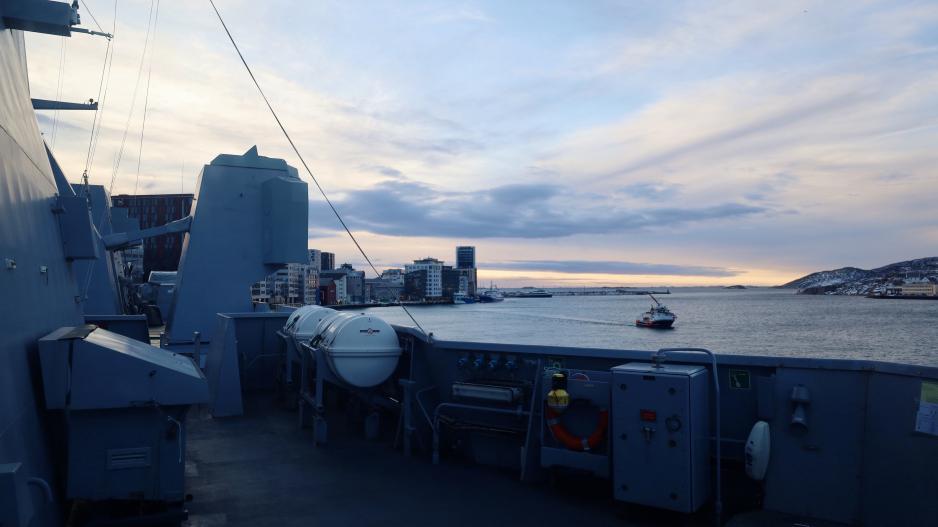
A variety of ships and boats in the Port of Bodø, both visitors and residents. The FS Bretagne has its home port in Brest, the main base for the French Atlantic fleet.

